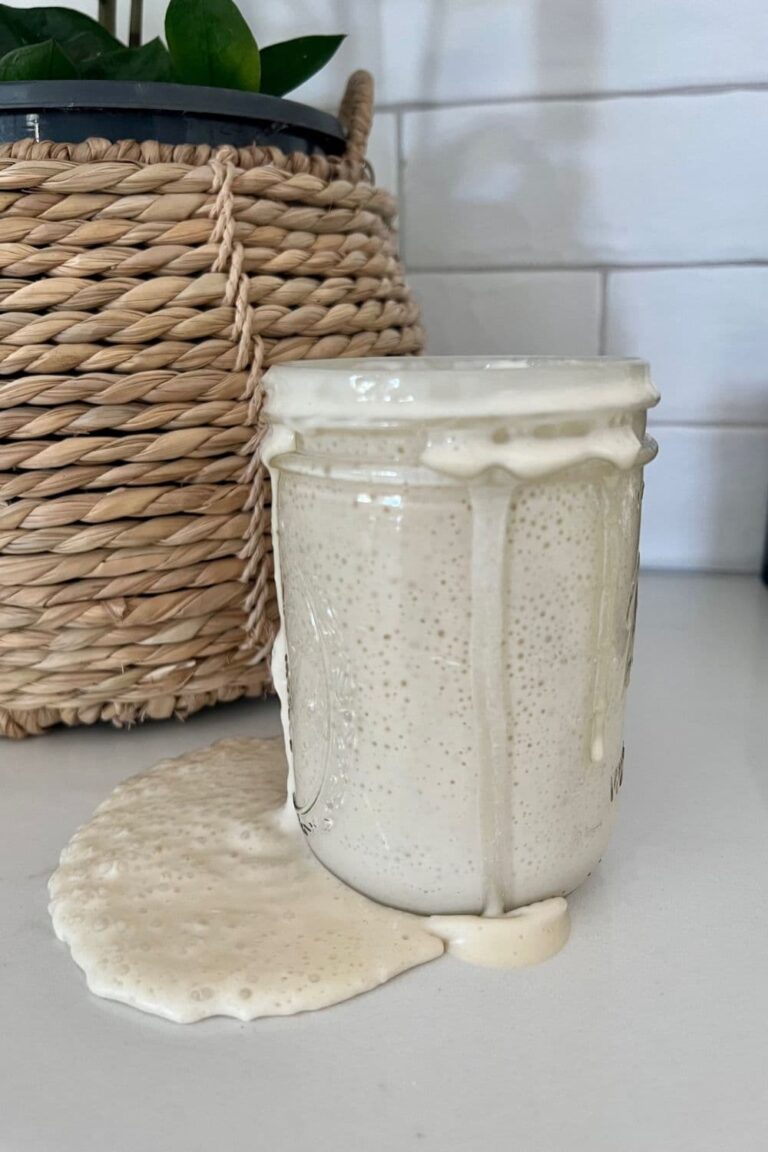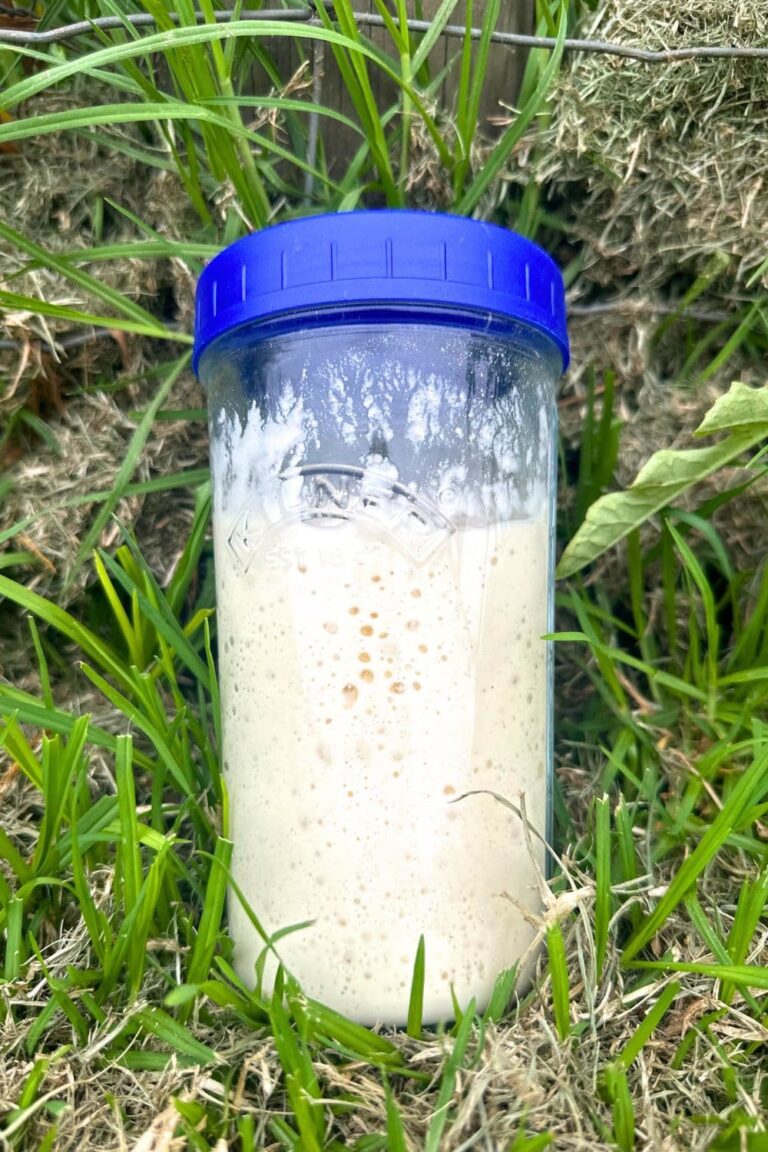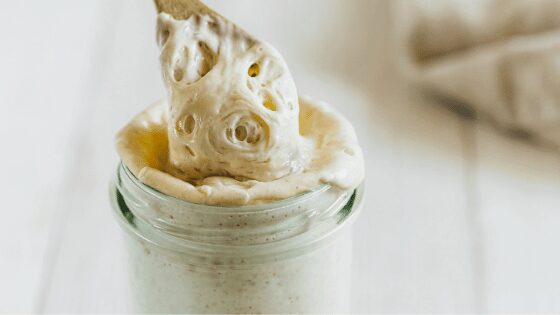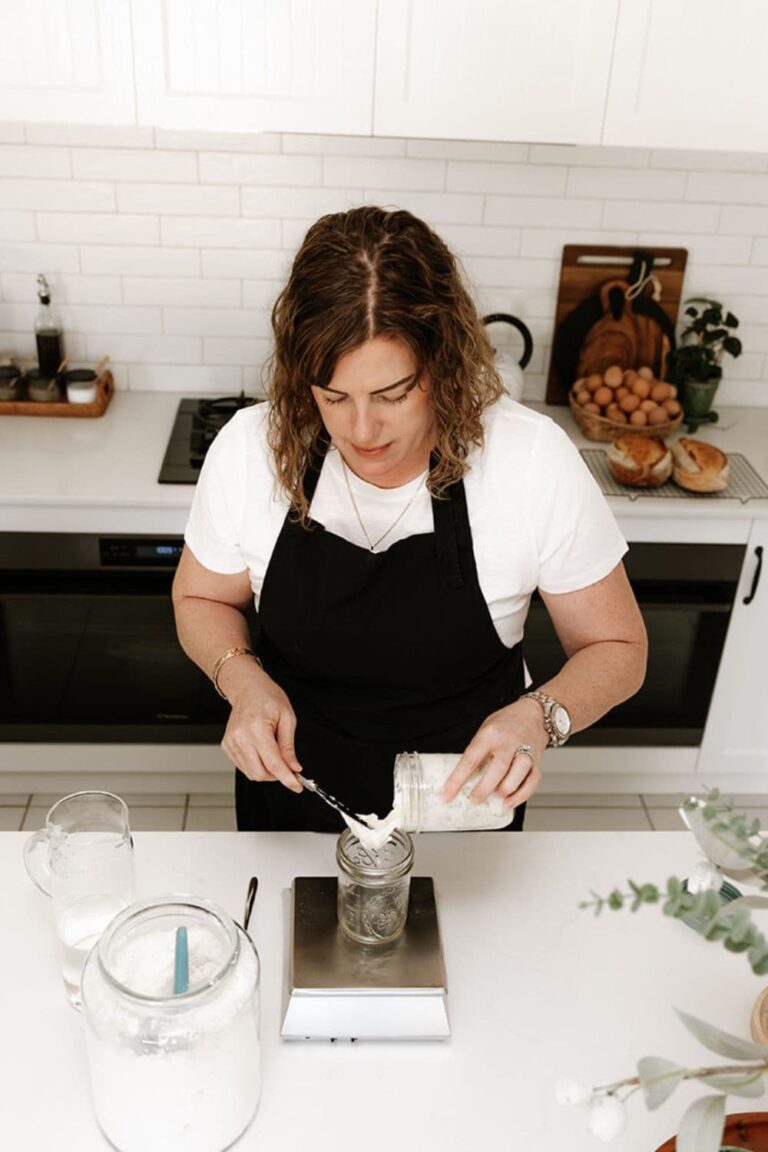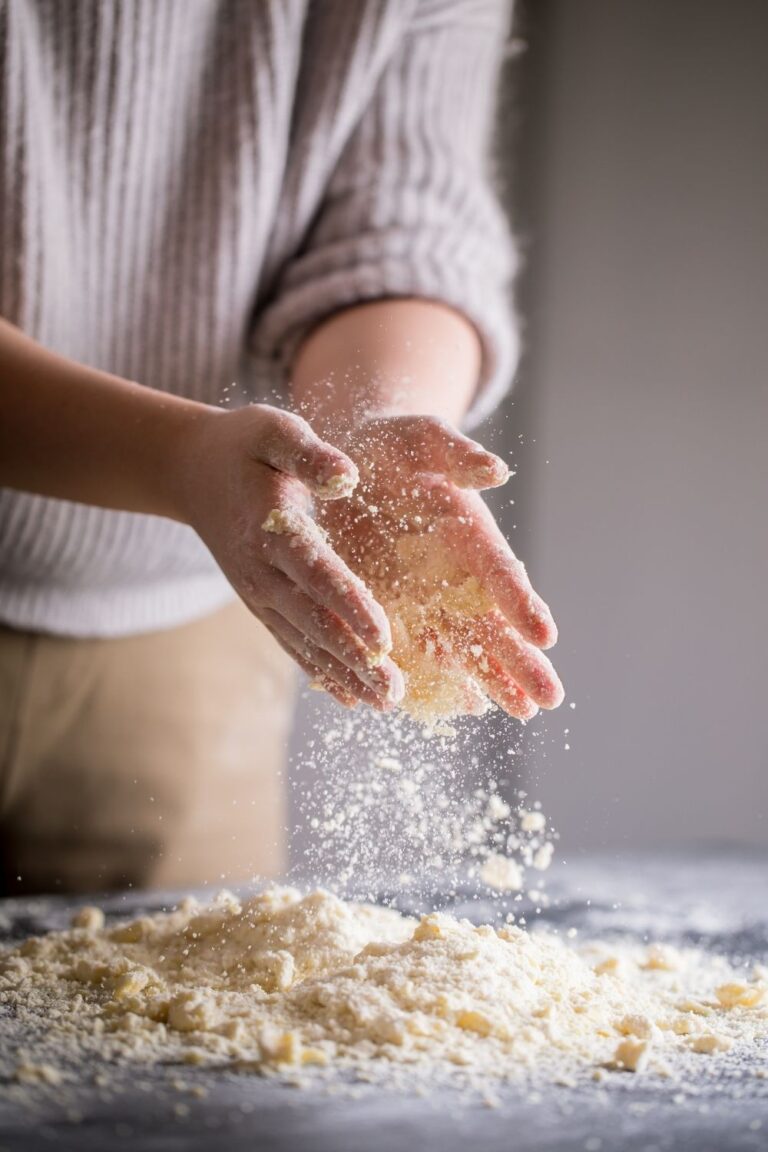How To Dehydrate Sourdough Starter [so you never have to worry]
This post may contain affiliate links.
Learning how to dehydrate sourdough starter is an important part of the sourdough baking journey.
Once you are able to dry your sourdough starter out you can store it indefinitely.
You also reduce the risk of losing your starter to mold or neglect. Whatever happens, you'll always have a back up to reactivate, should the worst happen to your starter.
It's comparable to having an insurance policy on your sourdough starter. You'll never have to stress if your starter becomes contaminated or the jar breaks.
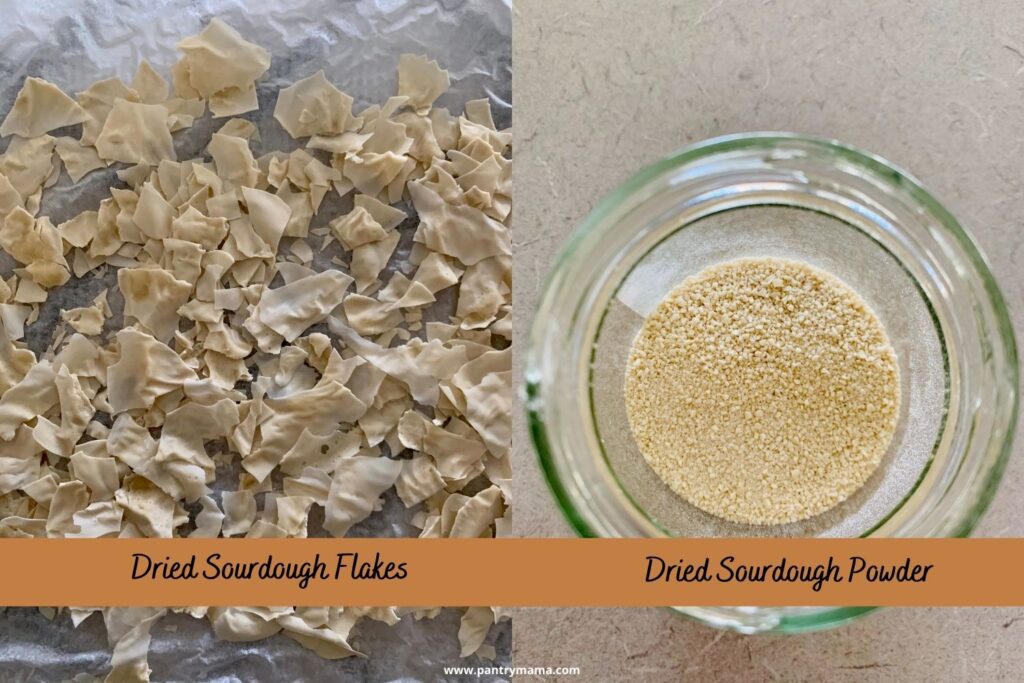
What Is Dry Sourdough Starter?
Dried or dry sourdough starter is a usually mature sourdough starter that has been dried out so that it now exists in shards or as a powder.
All the good bacteria and yeast are still there. You just need to add some flour and water to reactivate them.
By dehydrating the water and moisture from the starter, you are suspending the established colonies of yeast and bacteria indefinitely. It makes it much easier to store, transport and preserve a sourdough starter in a dried form.
Once you want to rehydrate or activate the sourdough starter again, you simply need to add water and flour to the flakes. You'll find a full step by step guide to activating a dried sourdough starter here.
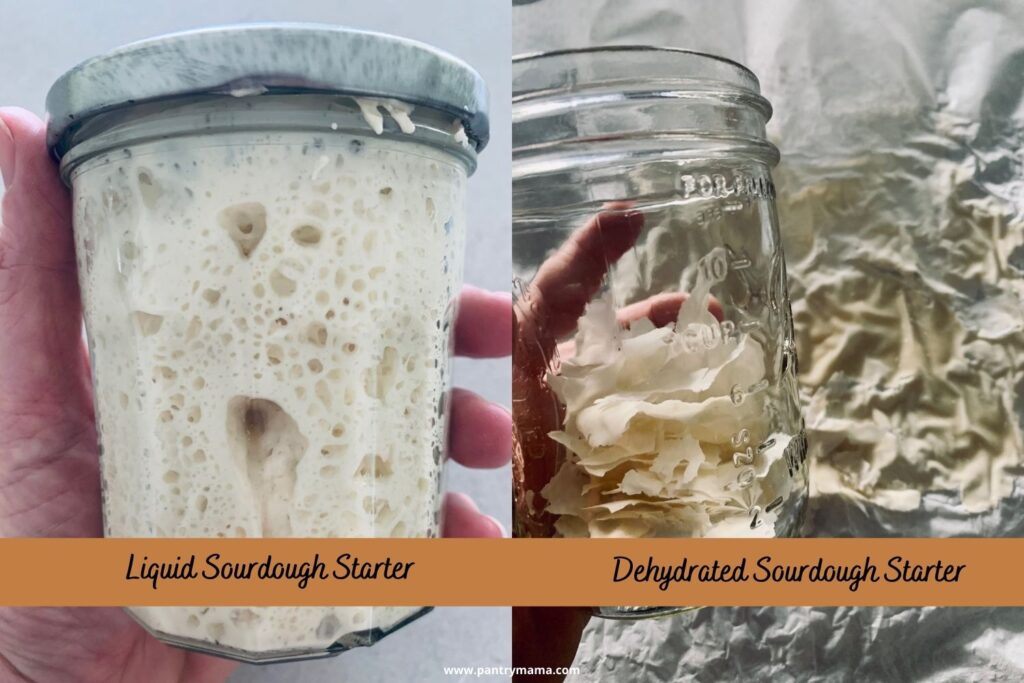
Benefits of Dry Sourdough Starter?
Dehydrating your sourdough starter is beneficial because it ensures that you always have sourdough starter on hand. You never have to worry about your starter dying (although it is pretty hard to kill anyway)!
- You never have to worry about losing your sourdough starter to mold or bad bacteria, or even Kahm yeast.
- If your liquid starter does become infected by mold, you don't have to start from scratch, you just reactivate your dried starter.
- You don't have to keep a back up in the fridge or a frozen sourdough starter if you don't have the room.
Situations where dehydrating sourdough starter is beneficial:
- You're needing to take a long break from your sourdough starter because you're having a baby, having surgery, moving house, busy with work, renovating - or anything along these lines.
- You can post your sourdough starter through the mail.
- Easily travel with your sourdough starter, mess free.
- Maybe you could even sell your sourdough starter if you want to.
- Easily give your sourdough starter as a gift.
- Basically you have a sourdough insurance policy no matter what life throws at you!
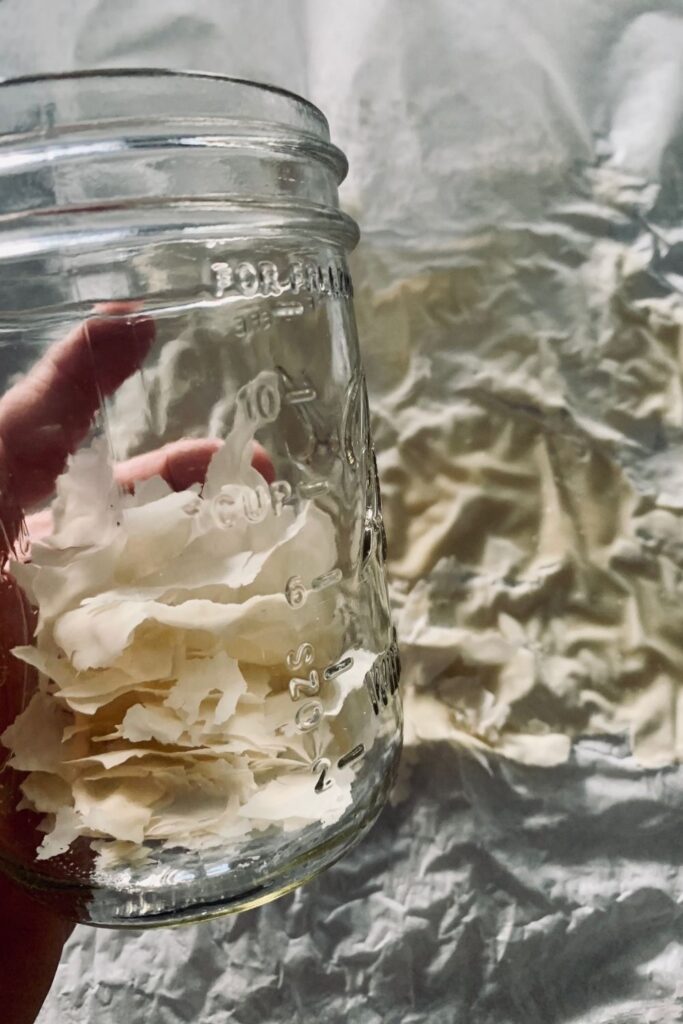
How Old Should Your Starter Be When You Dry It?
Ideally, you want to back up your mature sourdough starter. You don't want all that time and hard work to go to waste!
It's really not beneficial to dry your sourdough starter in the first few months as it's still maturing and "coming of age".
Once your starter is at least 3 months old, doubling and making good bread - it's time to dry some out and make a back up.
How Long Does it Take to Dehydrate Sourdough Starter?
Sourdough starter can be dried out fairly quickly, so long as the ambient temperature is not too cold.
Ideally, you want to dry your sourdough starter in a warm, dry environment.
Too much moisture or humidity may cause your sourdough starter to mold or deteriorate.
At an average room temperature of 25C (77F) your starter should take around 5 to 6 hours to dry completely (it should be dry and crumbly) with no moisture at all.
The time it takes to dry will really depend on how thin you spread it onto your paper. Ideally you want it really thin as the thicker it is, the harder it is to dry out.
Thickly spread starter also risks going bad if it takes too long to dry out.
Can You Dehydrate Sourdough Starter in a Dehydrator?
You definitely can dehydrate sourdough starter in a dehydrator.
You will need to line the trays with parchment paper before you spread the starter on.
You don't want to set the dehydrator above 98.6F (37C) as you will kill the bacteria. If you can set it lower than this, then do so.
You just want the air to circulate around your starter and dry it nice and evenly.
I dry my starter in the dehydrator and it works every single time. It doesn't damage it in any way. It is actually a really efficient way of drying your starter in a short amount of time.
In fact, my sourdough starter dries out so well and quite fast in my dehydrator that it actually dries the bubbles! You can see in the photo below where the bubbles were as my starter dried. So cool!
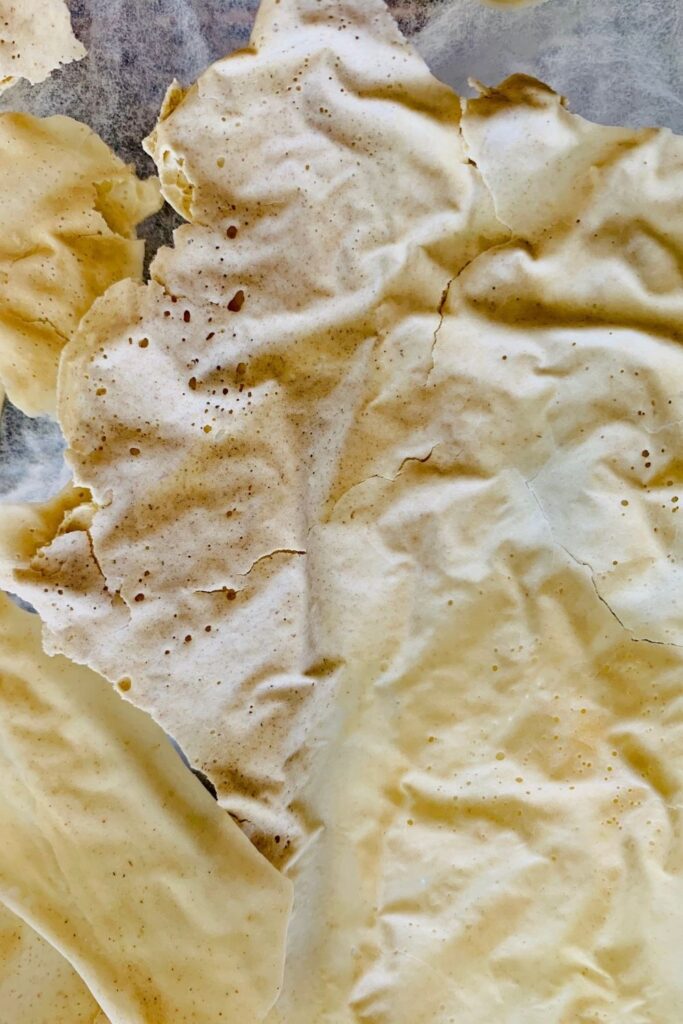
How To Dry Sourdough Starter
Drying out sourdough starter could not be easier!
You simply need to follow these steps:
- Feed your starter to ensure that it has the most active yeast colony. Ideally it should be at peak.
- When your starter is at its peak, use a pastry brush to smear the starter all over a piece of parchment paper.
- Leave the starter soaked paper in a warm place with good air circulation to dry thoroughly. Be careful not to leave it somewhere that it could get blown off the table as wet starter is not fun to clean up!
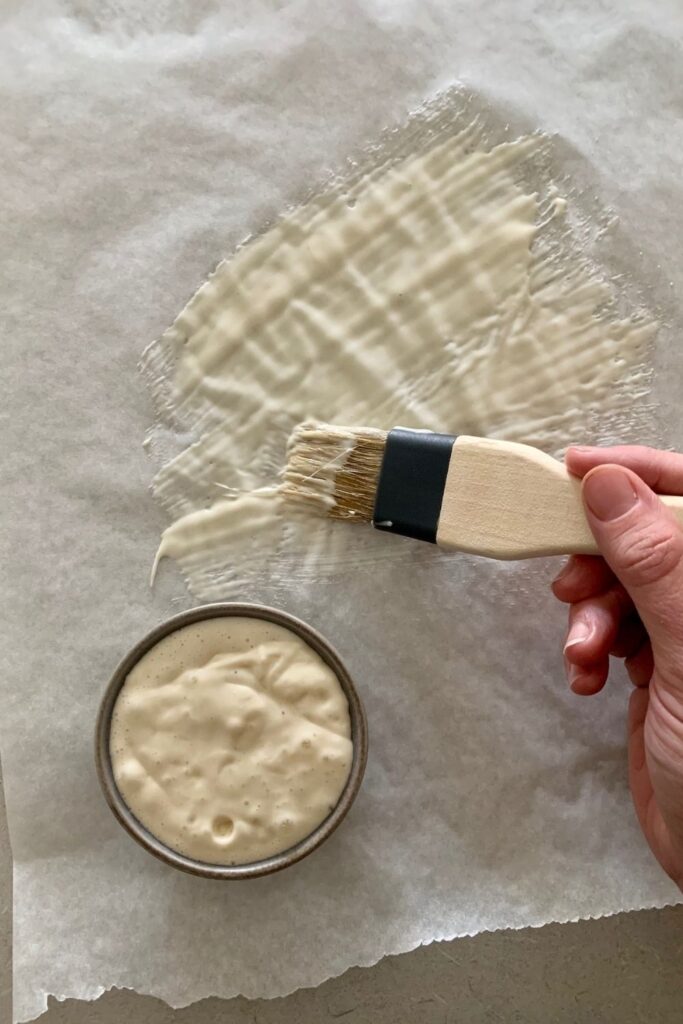
How To Store Dehydrated Sourdough Starter
Once your starter has been sufficiently dried out, you'll need to store it safely.
There are a number of ways you can do this:
- Simply place the dried shards of sourdough starter into a dry glass jar. Screw the lid on tightly and store in a cool, dark place.
- Put the dried sourdough starter into a zip loc bag and store away from heat and light.
- You can grind the starter up into a powder using a Thermomix or food processor. This can be stored in a glass jar or zip loc bag also.
- Using a vacuum sealer can ensure that your starter is not exposed to air at all. This is a good option if you are posting your sourdough starter through the mail or taking it on a plane. It will ensure it lasts for a very long time! Check out more about using heirloom sourdough starter here.
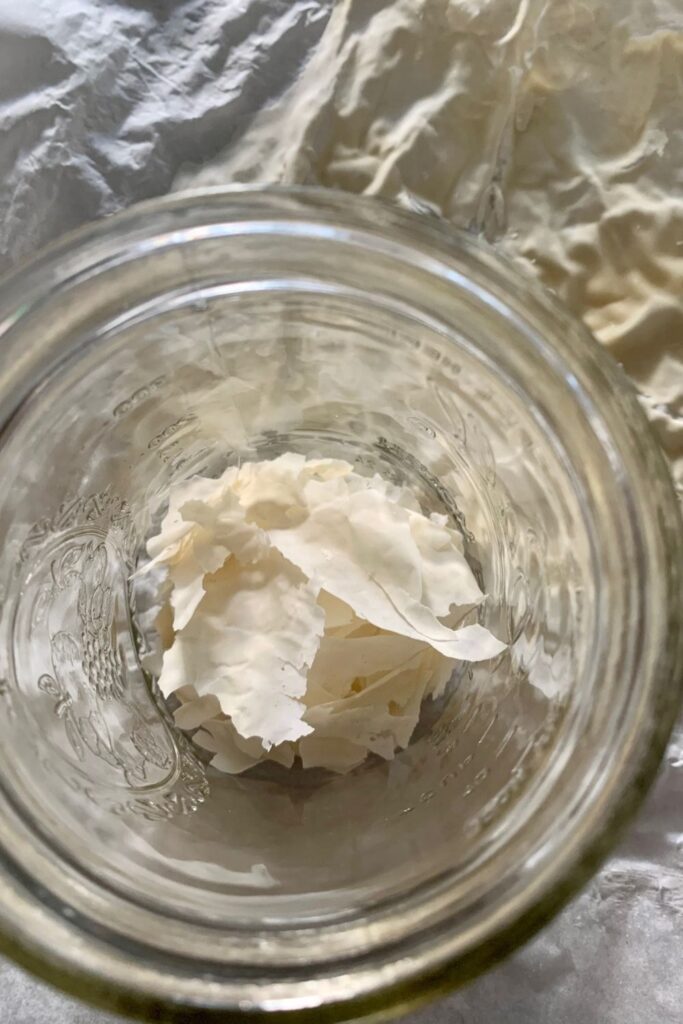
Are Shards or Powder Better When Drying Sourdough Starter?
Whether you store your dried sourdough starter as shards or as a powder or granules is up to you.
I prefer to activate my dried sourdough starter from granules (powder form) because I find it easier. However there is no concrete difference between the two.
If you are going to granulate your dried sourdough starter, make sure that your blender or food processor (or Thermomix) is completely dry. You do not want to introduce any moisture to your now dehydrated starter.
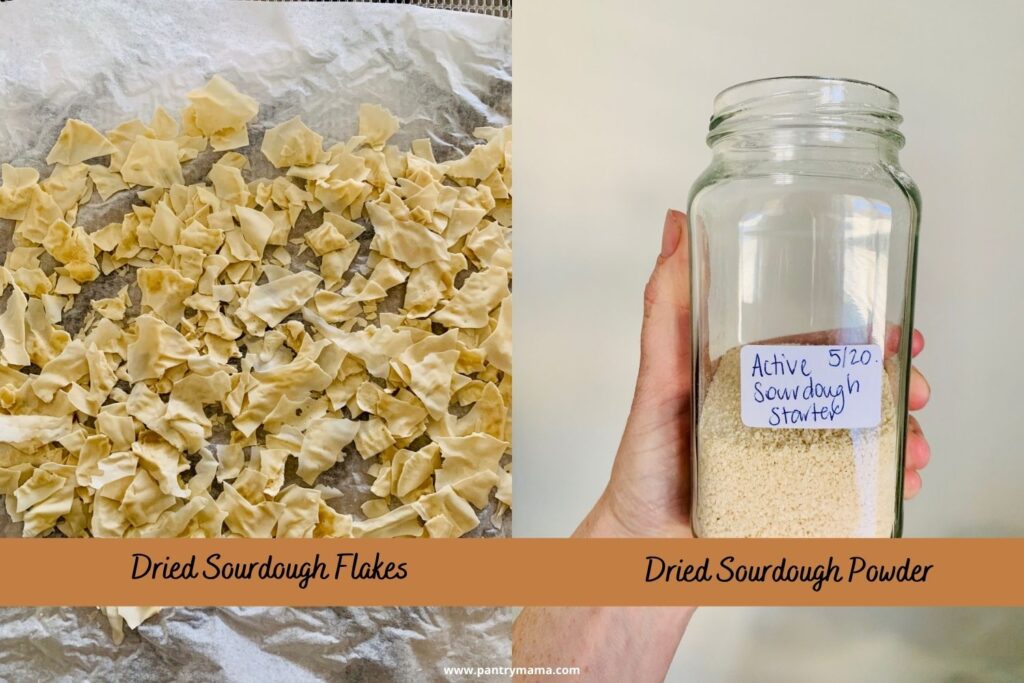
Tips for Drying Sourdough Starter
There are a few things you can do to ensure you dry your sourdough starter successfully, with no mold or other problems.
- Use good quality parchment paper. The starter will be quite wet. Cheap parchment paper will absorb the water and rip.
- Dry your sourdough starter at its peak. This ensures that it is much faster to reactivate when the time comes.
- Spread the starter as thin as you can to ensure even, fast drying.
- Keep an eye on the starter as it dries. Break up any thick pieces or parts that don't seem to be drying as quickly as the other sections.
- You want the starter to dry as quick as possible to avoid attracting fruit flies to your kitchen (but here's what to do if fruit flies do visit your sourdough starter).
- While good air circulation is important, don't place your starter soaked paper too close to a fan or air conditioning vent or it could get blown away. Cleaning up wet sourdough starter from the ground is not fun!
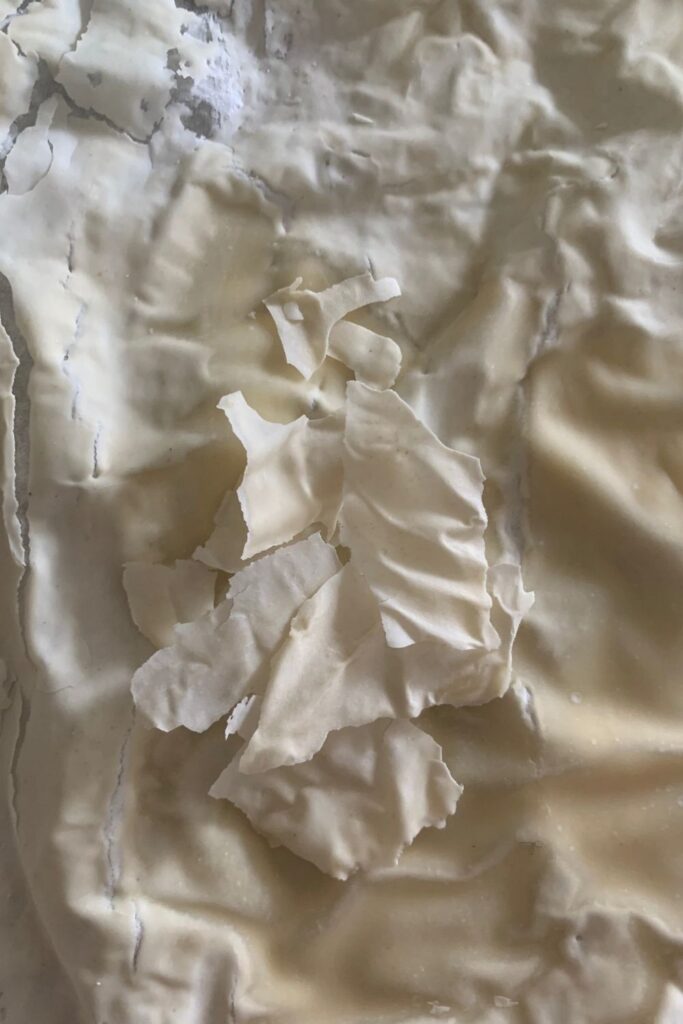
How Long Does Dehydrated Sourdough Starter Last?
Dried sourdough starter will last indefinitely, so long as you keep it away from light, heat and moisture sources.
It's best to store it in an air tight container.
I tend to update my dried sourdough starter every 12 months. It's not really necessary but I like to make sure I'm saving the most up to date version of my sourdough starter.
During the year, I often gift my dried sourdough starter too, so it's nice to replenish my supply.
To show you just how long sourdough starter can last - did you hear about the scientist that baked sourdough bread from 4000 year old Ancient Egyptian yeast? You can read about it here.
Is It Better to Dry Your Starter or Store it in the Fridge?
It really depends on how long you want to store your sourdough starter and how often you want to bake with it.
It's better to dry your sourdough starter if you aren't going to bake with it regularly - or at least for the next 6 months. Drying it is pretty foolproof and protects your starter from going bad.
Storing your sourdough starter in the fridge is better if you are still going to bake with your starter regularly, but you don't want to use it everyday. Ideally, you'll still feed your sourdough starter regularly, even when it's in the fridge.
It's still susceptible to mold and bad bacteria when stored in the fridge, so dehydrating your starter is always better for longer term storage.
| Situation | Fridge | Dehydrate |
|---|---|---|
| Not baking for 6 months while caring for a baby | • | |
| Baking weekly | • | |
| Moving internationally | • | |
| Flying interstate | • | |
| Going on 2 week vacation | • |
Frequently Asked Questions
Absolutely. Drying sourdough starter just puts the starter on hold. It basically places the starter into a deep sleep. You can wake it up by feeding it regularly with flour and water. You'll find full instructions for reactivating a sourdough starter here.
Dried sourdough starter can deteriorate if it is exposed to excessive light or heat.
Freezing will not kill your sourdough starter, in fact while some of the yeast will die off, majority of the yeast will survive. Freezing sourdough starter is a long term storage solution, however drying out your sourdough starter is a better way of storing it long term with less hassle.
Absolutely. A dehydrator is a time effective way to dry your sourdough starter. You need to set the dehydrator to the lowest heat setting possible - under 37C.
Yes you can, but just like a dehydrator, you really need to make sure that you keep the temperature very low. You might even want to place the starter into the oven once you've turned it off and use the residual heat to dry your starter out. While sourdough starter is quite resilient, high temperatures can be damaging to the yeast and bacteria colonies.
Yes, if you are lucky enough to have a freeze drying machine at home, you can definitely freeze dry your sourdough starter for long term storage.
Further Reading
If you found this article helpful, you might enjoy these ideas:
- Here are the instructions for reactivating a dried sourdough starter.
- It's a great idea to give your starter a boost before you dry it to ensure you dry the healthiest starter possible.
- How to maintain and feed your sourdough starter - a comprehensive guide to caring for a sourdough starter.
- Learn how to travel with your sourdough starter, including taking your starter on a plane.
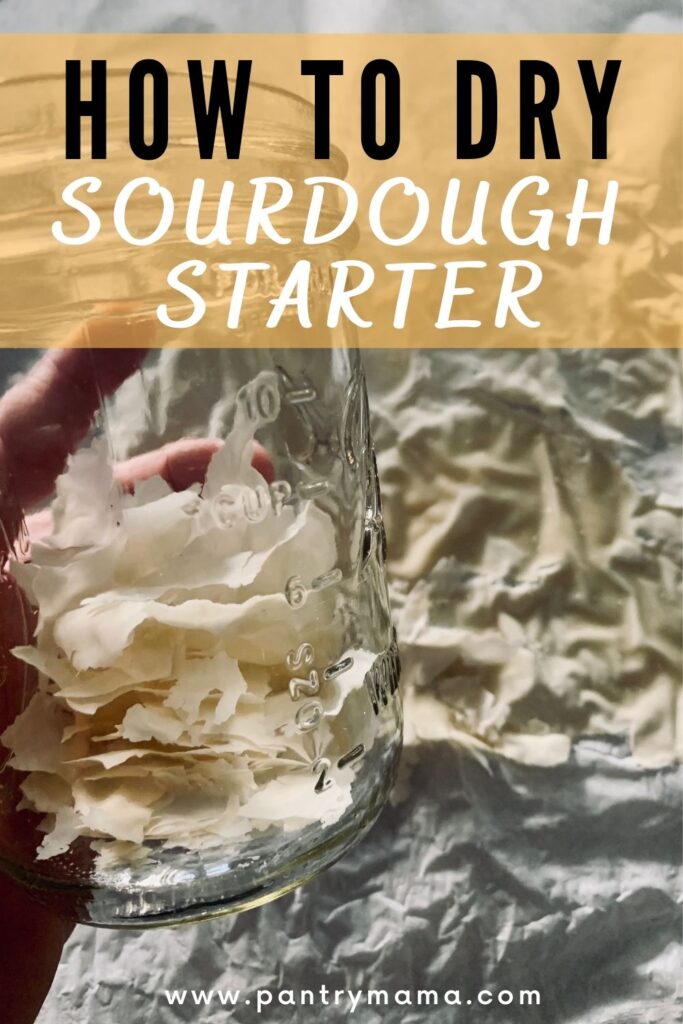

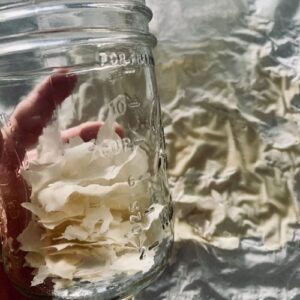
How To Dehydrate (Dry) Sourdough Starter
Equipment
- Good quality parchment paper
- Pastry Brush
Ingredients
- 50 g Sourdough Starter Active and bubbly
Instructions
- Take a piece of parchment paper and lay it out on a baking tray or sheet. This will stop the parchment paper from collapsing if you need to move it later.
- Using a pastry brush, paint your sourdough starter all over the parchment paper ensuring it's not too thick. You can use a spoon if you don't have a pastry brush, but try to get it nice and thin.
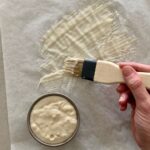
- Leave the sourdough starter in a warm place with good air flow to completely dry out. You don't want it to blow around, so make sure that it's not right under an air vent.
- Check the starter periodically and break up any pieces that aren't drying out completely. Breaking them into smaller pieces will help to ensure the starter dries out in a timely manner.
- Once the starter has completely dried out (usually takes up to 24 hours) you can break it up into pieces and place into a clean and dry glass jar.
- Store the dried sourdough starter in a cool, dark place. It will last indefinitely as long as it doesn't touch any moisture.
- When you want to activate your sourdough starter, follow these instructions.
Nutrition


